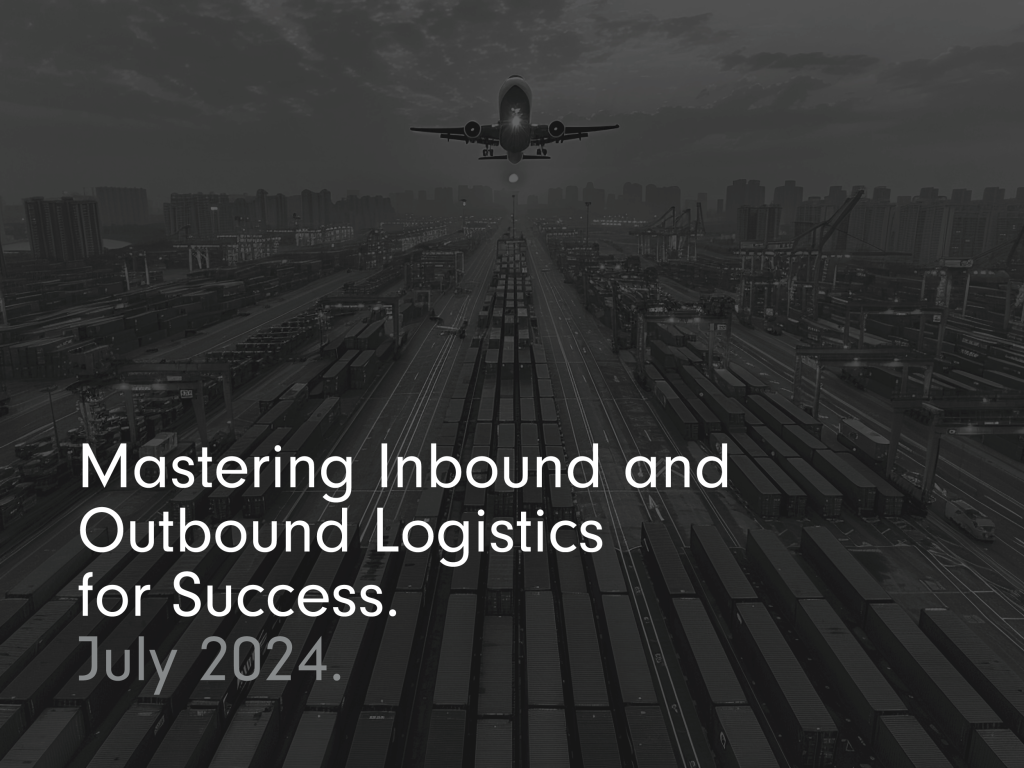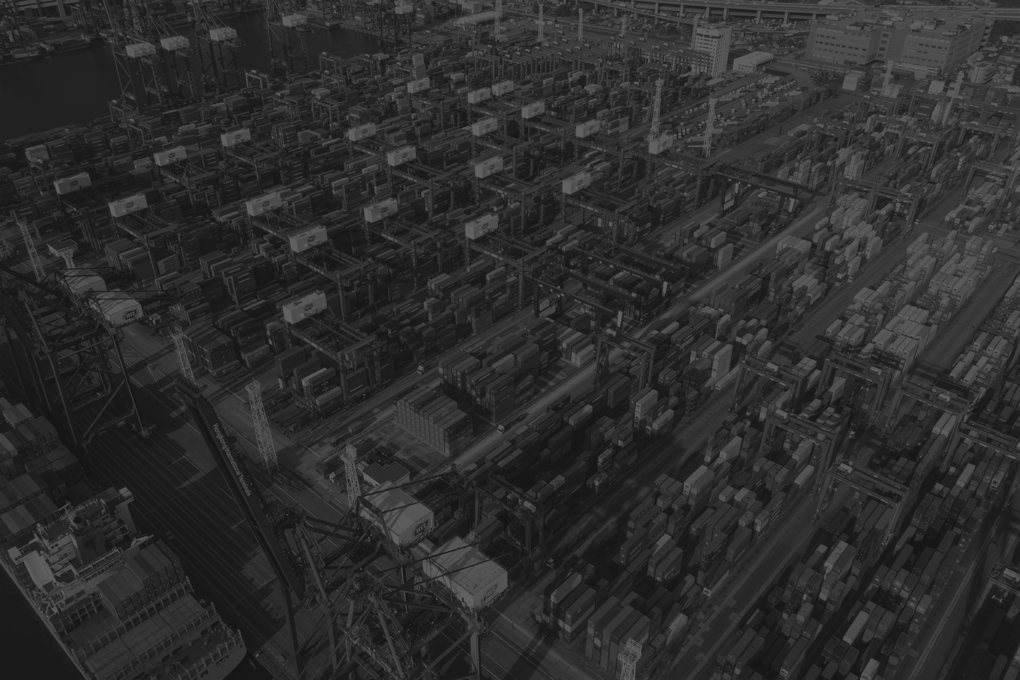Mastering Inbound and Outbound Logistics for Success.

Running a successful small business means doing many things at once. Logistics is very important but people often forget about it. It includes everything from managing inventory and sourcing materials to ensuring timely delivery to customers. Understanding the differences between inbound and outbound logistics is vital for improving efficiency, customer satisfaction, and profitability.
Inbound logistics involves receiving, storing, and distributing raw materials and goods. In contrast, outbound logistics focuses on delivering finished products to the end customer. This blog post will clarify these concepts, making it easier for you to optimize your logistics strategy and enhance your business operations. By refining these processes, you can reduce costs, improve delivery times, and provide a superior customer experience.
Introduction to Inbound and Outbound Logistics.
In logistics, two primary categories require close attention: inbound logistics and outbound logistics. They are a key part of your supply chain. They greatly affect how goods move, how good your customer service is, and how well everything runs.
Inbound Logistics.
Inbound logistics encompasses activities related to receiving, handling, storing, and transporting raw materials and components from suppliers to your business. Effective management of inbound logistics ensures that your operations have the necessary materials to produce goods without interruptions. This involves building strong relationships with reliable suppliers, maintaining optimal inventory levels to prevent stockouts or overstocking, and optimizing transportation methods to reduce costs and delivery times. A well-coordinated inbound logistics strategy streamlines the production process, enhancing productivity and reducing operational costs.
Outbound Logistics.
Outbound logistics is about getting products from your business to your customers. It’s important to make sure things arrive on time and without mistakes to keep customers happy and coming back. This means storing products right, filling orders accurately, and choosing affordable, fast shipping methods. A smart shipping strategy helps your company shine by ensuring customers receive their orders promptly and in perfect condition.
The Synergy Between Inbound and Outbound Logistics.
Understanding and managing the synergy between inbound and outbound logistics is essential for a seamless supply chain. By aligning these two aspects, you can minimize delays, reduce costs, and improve overall efficiency. For instance, just-in-time inventory systems depend on precise coordination of inbound logistics to ensure materials arrive exactly when needed, facilitating more efficient outbound logistics. This coordination results in faster order processing times, lower inventory holding costs, and ultimately, higher customer satisfaction.
The Basics of Inbound Logistics.
What Is Inbound Logistics?
Inbound logistics refers to the process of sourcing, receiving, and storing raw materials that are essential for running your business. These activities are fundamental to ensuring you have the necessary resources to produce your goods or services.
Managing inbound logistics involves coordinating with suppliers, negotiating contracts, and ensuring timely delivery of these materials. Good inbound logistics can lower costs, cut down on delays, and make the supply chain work better. This leads to a smoother production process and happier customers.
Key Components of Inbound Logistics.
Sourcing Raw Materials.
The first step in getting goods is to find the raw materials. This involves finding trustworthy suppliers, agreeing on the deal, and ordering what you need. It’s important to keep a good relationship with your suppliers to ensure the quality stays the same and you get your deliveries on time.
You should also think about where your suppliers are. If they are closer to you, you can save on shipping costs and get your stuff quicker. Using software to manage your suppliers can help make this process smoother.
Receiving and Inspection.
Once your raw materials are ordered and on their way, you need to prepare for their arrival. This involves a few steps, such as setting up a receiving area, preparing the necessary paperwork and inspection equipment, and training your staff on proper inspection procedures.
Receiving is a critical step in ensuring the quality of your raw materials. You should carefully inspect each delivery to ensure that it meets your standards and specifications. Any defective or damaged goods should be documented and returned to the supplier. This will help maintain the quality of your production process and prevent any delays caused by faulty materials.
Upon arrival, materials must be received and inspected for quality control. This step is essential to verify that the materials meet your standards and match the purchase order. The inspection process typically involves checking the quantity received, examining materials for any damage or defects, and occasionally conducting sample testing. Accurate documentation during this stage is vital for inventory management and resolving any disputes with suppliers.

Storage and Inventory Management.
After checking, materials go to a warehouse. Good inventory systems help keep track of how much stuff we have. This stops us from having too much or too little of what we need. Nowadays, we use computers to watch our stock.
These computers tell us right away how much we have, where things are in the warehouse, and guess what we’ll need later based on what we used before. It’s also really important to store things the right way. This means keeping things organized and in the right conditions so they stay good and are easy to find.
Benefits of Effective Inbound Logistics.
Cost Savings.
Optimizing inbound logistics allows for negotiating better deals with suppliers and reducing transportation costs, leading to significant savings. This entails analyzing current supply chain practices, identifying inefficiencies, and implementing strategic changes. Furthermore, bulk purchasing and consolidated shipments can further reduce expenses.
Improved Efficiency.
Streamlined inbound logistics processes can minimize lead times, ensuring that your production line operates smoothly without interruptions. Efficient inventory management and effective communication with suppliers are essential to prevent delays. Additionally, adopting advanced technologies such as real-time tracking systems can enhance visibility and control over inbound shipments.
Enhanced Supplier Relationships
Developing strong relationships with suppliers can result in better terms, higher quality materials, and more reliable deliveries. Regular communication, collaboration on forecasts, and joint problem-solving initiatives foster mutual trust and reliability. Long-term partnerships with key suppliers can also offer a competitive edge through exclusive deals and early access to new products or materials.
The Basics of Outbound Logistics.
What Is Outbound Logistics?
Outbound logistics encompasses the activities required to deliver finished products to customers, including warehousing, order fulfillment, transportation, and distribution. Efficient outbound logistics are essential for ensuring that products reach customers on time and in good condition.
In essence, outbound logistics bridge the gap between your business and your customers. Effective outbound logistics can lead to higher customer satisfaction, repeat business, and a stronger brand reputation. This involves optimizing warehouse operations, ensuring accurate and timely order picking, and selecting the right transportation partners.
Additionally, implementing automated systems for order tracking and delivery updates enhances transparency and customer trust. By continually assessing and refining outbound logistics processes, businesses can adapt to evolving market demands and maintain a competitive advantage.

Key Components of Outbound Logistics.
Order Processing.
Order processing is the initial step in outbound logistics. It encompasses capturing customer orders, verifying details, and preparing goods for shipment. This critical phase includes confirming inventory availability, generating invoices, and coordinating with the warehouse for picking and packing. An efficient order processing system accelerates this process, ensuring accurate order fulfillment and reducing the time it takes to deliver products to customers.
Warehousing and Storage.
Finished goods require storage until they are ready for shipment. Proper warehousing practices ensure that products are stored safely and can be quickly retrieved when needed. This involves optimizing warehouse space, implementing inventory tracking systems, and maintaining appropriate storage conditions to preserve product quality. Effective warehousing significantly enhances the speed and reliability of the fulfillment process.
Transportation and Delivery.
The final stage in outbound logistics is transporting and delivering products to customers. This may involve various modes of transportation, such as trucks, ships, or planes, depending on the destination. Coordinating transportation includes selecting efficient and cost-effective routes, scheduling deliveries, and ensuring compliance with regulatory requirements. Timely and reliable transportation is crucial for meeting customer expectations and maintaining satisfaction.
Benefits of Effective Outbound Logistics.

Increased Customer Satisfaction.
Making sure products are sent out quickly and arrive in good shape means happier customers who will come back for more. By delivering faster and making fewer mistakes, companies can earn a good name and keep their customers loyal.
Cost Efficiency.
Optimizing transportation routes and warehousing practices can reduce costs and increase overall profitability. Efficient logistics can lead to savings in transportation expenses, labor costs, and storage fees. Additionally, streamlined operations help minimize wasted resources and enhance operational efficiency.
Better Inventory Management.
Good outbound logistics keep the right amount of stock to meet customer needs without having too much. This avoids wasting money on storing too much stock and losing sales when items run out. By using smart tracking and predicting, companies can keep this balance.
By adding important parts carefully and improving how they send out goods, companies can make their supply chain better and do well over time. This makes everything run smoother and helps the business grow in a smart way.
Differences Between Inbound and Outbound Logistics.
Focus and Objectives.
Inbound logistics is dedicated to acquiring and managing materials essential for production. This involves understanding production requirements, identifying and collaborating with potential suppliers, and ensuring a consistent flow of materials into the manufacturing facility. In contrast, outbound logistics concentrates on delivering finished products to customers.
This involves planning distribution channels, managing inventory levels, and ensuring timely deliveries to meet customer expectations. Both aspects are crucial, serving distinct purposes within the supply chain to ensure the seamless operation of the entire production and distribution process.
Activities Involved.
Inbound logistics is about getting raw materials from suppliers, checking them on arrival to make sure they are of good quality, and storing them until they are needed. Outbound logistics is about taking customer orders, getting the right products ready, and sending them out. It also includes storing finished products and getting them to the customer safely and on time.
Key Metrics.
To handle incoming goods, check how long it takes to get supplies, how much they cost, and how fast you use them. This shows if you’re using your resources well. For outgoing goods, make sure products reach customers quickly, the right items are sent, and watch your shipping costs. These things affect how much you spend on shipping and handling.
How to Optimize Inbound Logistics.

Building Strong Supplier Relationships.
Cultivating robust relationships with suppliers can yield better terms, enhanced quality, and more reliable deliveries. Regular communication and performance reviews are pivotal in fostering these relationships. Organizing regular meetings, sharing forecasts, and providing feedback can enhance collaboration and ensure mutual goals. Building trust with suppliers can lead to more flexible and responsive service, valuable for maintaining a smooth supply chain.
Implementing Technology Solutions.
Leveraging technology such as inventory management software can streamline inbound logistics processes, facilitating easier material tracking and stock level management. Advanced systems offer real-time inventory data, predict future needs, and automate reordering processes. Integrating technology solutions like RFID tags or barcoding can further improve accuracy and efficiency in tracking materials through the supply chain. Additionally, cloud-based systems enhance communication and coordination among stakeholders, leading to more synchronized operations.
Negotiating Better Terms.
Negotiating favorable terms with suppliers can result in cost savings and more advantageous delivery schedules, boosting overall efficiency. This process involves not only negotiating prices but also considering payment terms, delivery schedules, and order quantity flexibility. Adopting a collaborative negotiation approach, where both parties understand each other’s needs and constraints, can lead to mutually beneficial agreements. Regularly reviewing and renegotiating terms can help adapt to changing market conditions and maintain a competitive edge.
How to Optimize Outbound Logistics.

Efficient Order Processing.
Putting in a good system helps get orders ready faster. This makes customers happy because they get their stuff quicker. You can do this by using computers to track orders, making work flow better, and linking the order system with the stock and shipping.
Optimizing Transportation Routes.
Planning and optimizing transportation routes can significantly reduce delivery times and transportation costs, making your outbound logistics more efficient. Utilizing route optimization software, considering alternative transportation methods, and analyzing traffic patterns can all contribute to more efficient routing.
Using Third-Party Logistics Providers.
Using 3PL providers can improve a business’s shipping process by tapping into the expertise and resources of specialized companies. Using 3PL providers can help businesses improve their shipping process by utilizing the expertise and resources of specialized companies. These providers offer services such as storage, transportation, and freight forwarding. This allows businesses to focus on their main activities while benefiting from their partners’ logistical knowledge.
The Role of Technology in Logistics.
Inventory Management Systems.
Advanced inventory systems can help you track stock levels, reorder efficiently, and avoid overstocking or running out of stock. Features such as automated inventory tracking, demand forecasting, and real-time inventory visibility can enhance overall inventory management efficiency.
Transportation Management Systems.
Transportation management systems (TMS) can optimize routes, track shipments in real-time, and improve overall transportation efficiency. TMS solutions can also provide analytics and insights into transportation operations, helping businesses make data-driven decisions to further enhance their logistics performance.
Warehouse Management Systems.
Warehouse management systems (WMS) can enhance warehouse operations, improving storage, retrieval, and overall efficiency. WMS can support advanced functionalities such as automated picking and packing, real-time inventory updates, and integration with other supply chain systems, leading to more efficient warehouse management.
Common Challenges in Logistics.
Managing Suppliers.
One common challenge in inbound logistics is managing suppliers and ensuring timely deliveries. Building strong relationships and effective communication can help mitigate these challenges. Implementing supplier performance metrics, regular reviews, and collaborative planning can further enhance supplier management.
Meeting Customer Expectations.
In outbound logistics, meeting customer expectations for quick and accurate deliveries can be challenging. Implementing efficient processes and leveraging technology can help address this. Offering multiple delivery options, maintaining transparent communication with customers, and continuously improving delivery performance are key strategies to meet customer expectations.
Cost Management.
Controlling costs in both inbound and outbound logistics is crucial. Implementing cost-saving measures and optimizing processes can help manage expenses effectively. This can include negotiating better rates with suppliers, optimizing inventory levels, and utilizing technology to improve efficiency and reduce waste.
Future Trends in Logistics.
AI and Automation.
Artificial intelligence and automation are set to revolutionize logistics, improving efficiency, accuracy, and overall performance. AI can be used for predictive analytics, demand forecasting, and optimizing supply chain operations, while automation can streamline processes such as order fulfillment, sorting, and delivery.
Sustainability.
Sustainability is becoming increasingly important in logistics, with businesses focusing on eco-friendly practices and reducing their carbon footprint. This includes adopting green transportation methods, minimizing packaging waste, and implementing energy-efficient practices in warehouses and distribution centers.
Real-Time Tracking.
Real-time tracking technologies are enhancing visibility in logistics, allowing businesses to monitor shipments and respond to issues promptly. GPS tracking, IoT devices, and blockchain technology are some of the tools being used to provide real-time visibility and improve overall supply chain transparency.
Conclusion.
Making your shipping and receiving better is key for small businesses. Focus on making things run smoothly, use technology, and work well with your suppliers. This can help you save money, make your customers happier, and grow your business. If you want to improve, look for more information or talk to experts who can give you advice that fits your needs. With the right steps, your business can move things around easily and grow in the market.
Frequently Asked Questions.
Inbound logistics refers to the processes related to receiving, storing, and distributing inputs or raw materials needed for production, while outbound logistics involves the activities associated with delivering finished products to customers, distributors, or retailers.
Third-party logistics providers offer specialized services such as warehousing, transportation, and freight forwarding. Partnering with a 3PL can help businesses manage their logistics more effectively by leveraging the expertise and resources of these providers, allowing business owners to focus on their core operations.
Route optimization software improves outbound logistics by planning the most efficient transportation routes, reducing delivery times, and cutting transportation costs. It can also analyze traffic patterns and consider alternative transportation methods to further enhance route efficiency.
To meet customer expectations in outbound logistics, businesses should implement efficient processes, leverage technology, offer multiple delivery options, maintain transparent communication with customers, and continuously improve delivery performance.